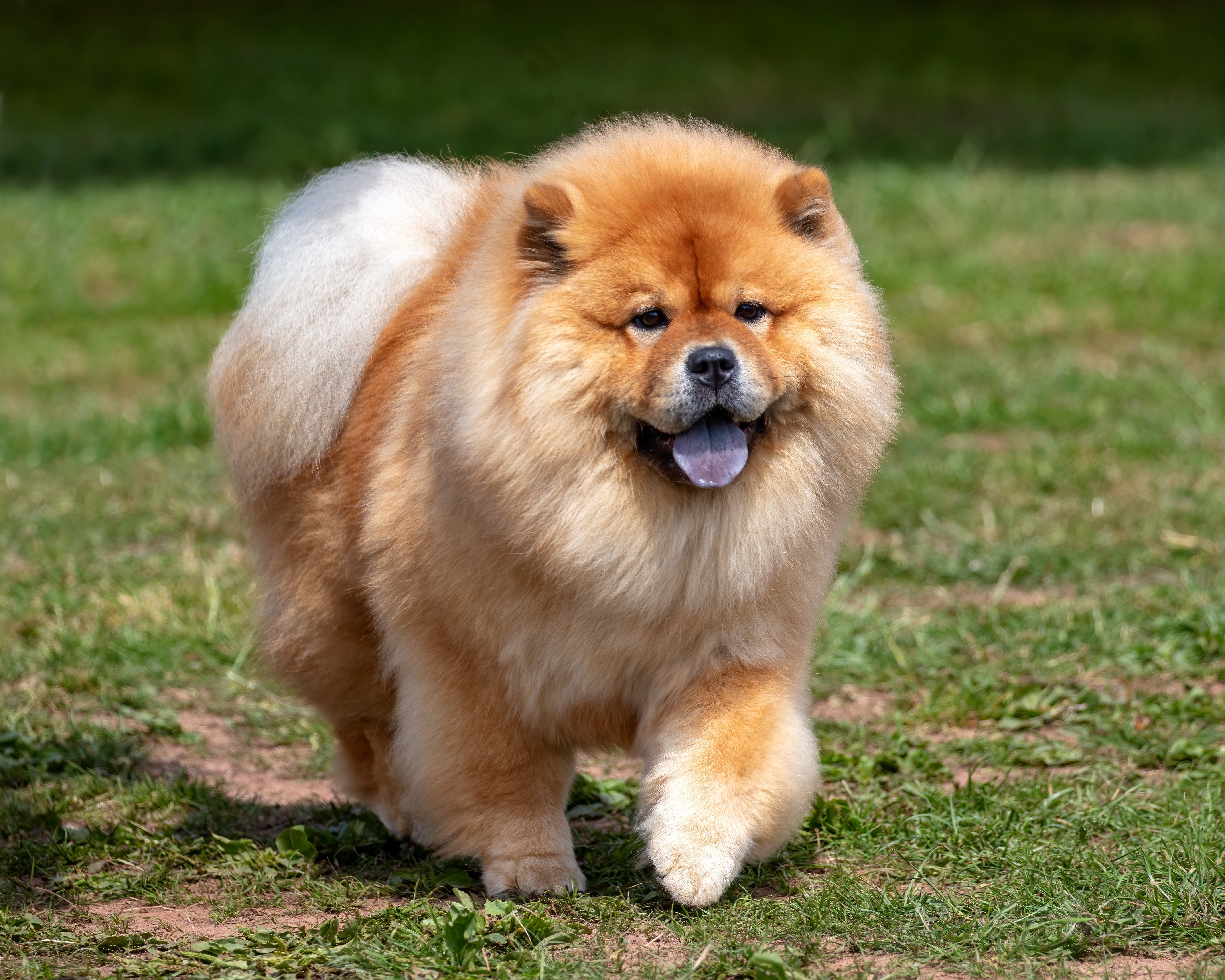Chow Chow
Chow Chows are large, compact dogs that look like a giant, fluffy bear. They have a thick, abundant top coat, a wooly undercoat, and a tail that curls over its back. Known for their resting scowl expression and blue-black tongue, they are unique, independent dogs with a short, stilted gait.
Breed characteristics carousel
Learn More
Need to Know
- Suitable for experienced owners
- Extra training required
- Enjoys active daily walks
- Can be left occasionally with training
- Some drool
- Requires daily grooming
- Chatty and vocal
- Barks, alerts, and may be physically protective
- May need additional training to live with other pets
- May need additional supervision to live with children
- Needs a large yard, either in suburban or rural areas
- Can be left alone occasionally with training
- AKC Registered Breed

Personality
While bonded to their owner, the Chow Chow is generally reserved and independent. They are not especially playful or affectionate. The Chow Chow is good for owners who enjoy their independence and who don’t mind a dog giving their love from a distance.
Chow Chows, among the world’s oldest breeds, likely descended from spitz breeds, although it’s impossible to tell. They have been in China for hundreds, if not thousands of years, depicted in artifacts of China’s Han Dynasty. Chows have played many roles during their long history. At times, they were the lordly companions to Chinese nobles, but over the centuries they also earned their keep as guarders, haulers, and hunters. A few pure descendants were kept in isolated monasteries and wealthy households which helped preserve the breed. In the 1820s Chow Chows were exhibited at the London Zoo as the “Wild Dogs of China,” but they didn't really catch on in the West until Queen Victoria acquired one later in the century. Chows were first exhibited in America in the 1890s.
These teddy bears need a calm, pragmatic owner who can work hard on training and socialization and who understands that, despite their cuddly looks, these are snobbish dogs that can be aloof, even with their owners. Ideal owner qualities also include a willingness to perform a lot of grooming, and the ability to provide a large, secure yard. Chows are best suited for homes with teenagers or child-free families, and do best in rural and suburban areas that do not get too hot as they are very sensitive to the heat.
They love the outdoors and don’t require extreme amounts of exercise. Chow Chows are quite happy doing their own thing in the yard. Too much exercise too young can lead to bone and joint problems later in life, so exercise must be monitored closely.
The Chow Chow is a large dog with territorial tendencies so they do best in large homes with big well-fenced yards. They must have somewhere shaded and cool that they can retreat to in warm and hot weather so they do not get overheated.
Chow Chows have two coats: the rough variety is coarse-textured and not excessive in length, and the undercoat is soft and wooly. They have thicker hair around the neck and backs of their thighs. Both need regular grooming.
Chows Chows can be resistant to training but respond well to positive reinforcement. They need to be leash-trained and should have plenty of early and ongoing socialization. Chows are unlikely to be particularly social or playful dogs but the more they are around other pets and humans, the better.
The Chow Chow does best in child-free homes or families with no children. They don’t make the best pets for young children.
The cost of a Chow Chow from a breeder is significantly more than the cost of adopting one from a local shelter or rescue. The adoption fee usually covers additional items such as spaying or neutering, vaccines, and microchipping.

Learn more about feeding and caring for your Chow Chow on Purina.
Did You Know?
- The Chow Chow has a blue and black tongue.
- They have 44 teeth, unlike all other dogs which have 42.
- One 8th-century Emperor is reported to have kept a kennel of 5,000 Chow Chows., They were looked after by 10,000 huntsmen.
- Sigmund Freud always had a Chow Chow in the room when seeing patients. This made them more inclined to talk about their problems, and Jofi, his favorite dog, would indicate when the patient's hour was up. Thus, Freud never had to look at his watch.
- The Chow has deep-set eyes which means they have poor peripheral vision. It’s best to approach them from the front.

